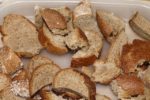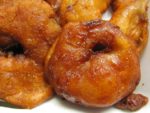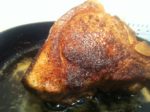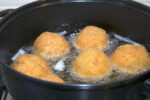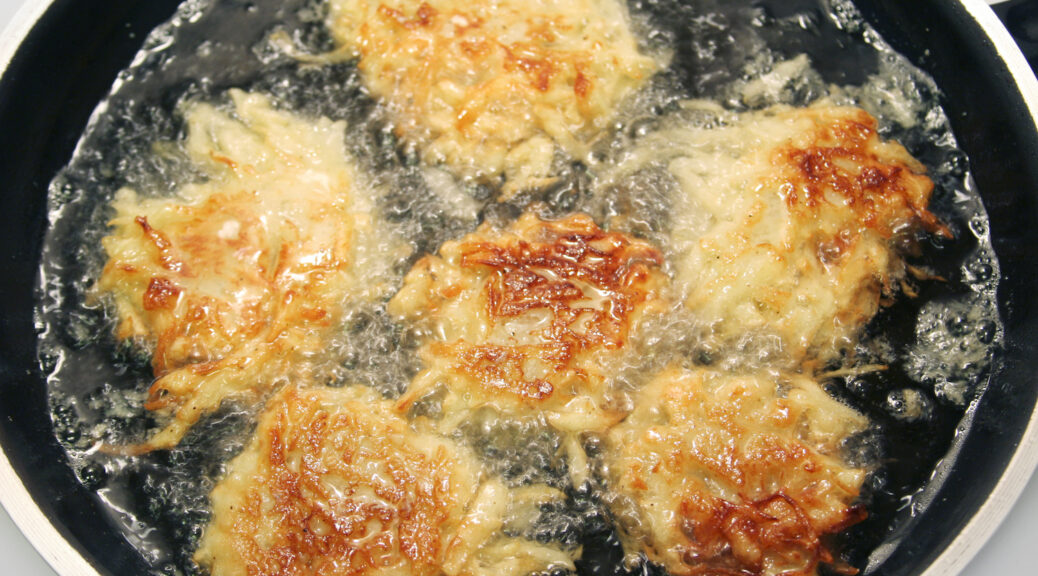
Best Practices for Frying Foods
Before commercialized fats were produced, people used beef suet, pork lard, dripping from cooked meats, and butter to fry food.
FROM AN 1800s COOKBOOK: “Frying, though one of the most common of culinary operations, is one that is least performed perfectly well.”
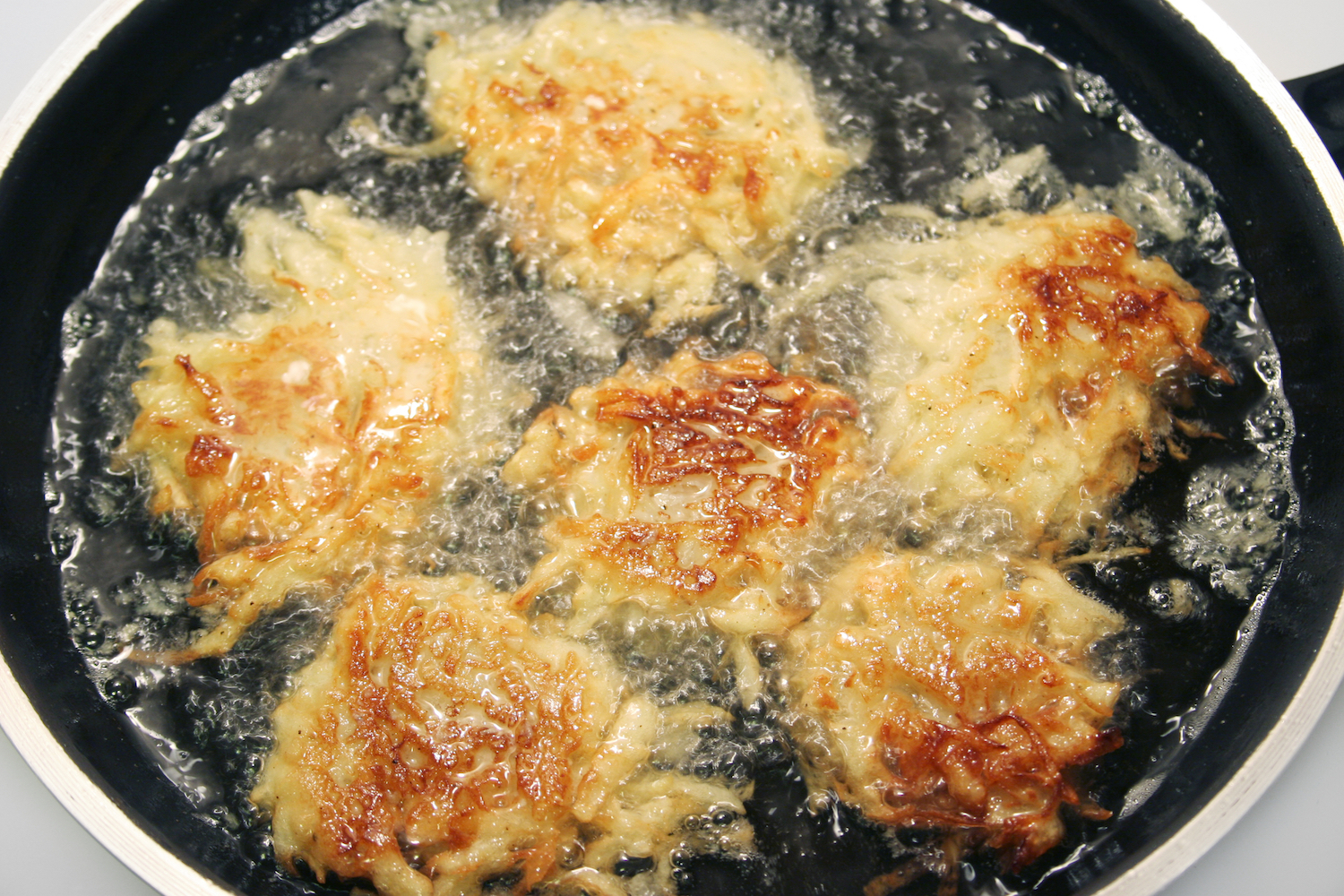 GENERAL RULES FOR FRYING
GENERAL RULES FOR FRYING
Since fat, when heated, reaches such a high temperature, the kettle in which it is heated should be made of iron.
The Dutch Oven is a very convenient utensil for small things.
A Frying-Pan should be about four inches deep, with a perfectly flat and thick bottom, 12 inches long and 9 inches broad, with perpendicular sides. To make sure that the pan is quite clean, rub a little fat over it, make it warm, and wipe it out with a clean cloth.
TO HEAT FAT
When the fat is to be used, the frying-pan should be placed on the range an hour before the time it is needed. It will then become gradually hot, and at the right moment can be quickly raised to the smoking heat needed for frying.
The fire under the pan must be clear and sharp, otherwise the fat takes so long before it becomes ready, and demands such attendance to prevent its catching fire, that the patience of cooks is exhausted, and they frequently, from ignorance or impatience, throw in what they are going to fry before the fat is half hot enough. Whatever is so fried will be pale and sodden, and offend the palate and stomach not less than the eye.
Excessive moisture cools fat considerably, hence, foods to be fried should be as dry as possible. Place the foods in a bath of fat deep enough to float them. The kettle should not be too full, however, as fat is apt to bubble over, especially when moist foods are placed in it.
Foods may be placed in a frying basket, or lowered into the fat and taken from it with a wire spoon.
When one quantity of food has been removed, the fat should be reheated and its temperature tested before adding the second quantity of food. All fried foods should be drained on paper.
TESTING FAT FOR FRYING
Heat the fat. When a blue smoke begins to appear, drop in a cube of bread. If the bread browns a golden brown in forty seconds, the fat is hot enough for any food which has previously been cooked. Uncooked food requires a longer, slower frying; the cube of bread should brown in sixty seconds for such food.
Food cooked in fat tested in this way should never soak fat if one is careful to put a small enough quantity of food in at a time—not enough to cool the fat.
AVOIDING THE BURNING OF FAT
When fat is put on the range to heat for frying, put in a cube of bread. If the fat is forgotten, the bread will burn first, and the odor of the burned crumb will attract the attention. The burned flavor cannot be removed from burned fat.
KEEPING FROM DROPPING GREASE
Dropping grease on the range or clothes can be avoided by holding a tin plate under the frying-basket when removing it from the kettle. When the articles to be fried are prepared, the wire basket should be dipped into the fat to grease it, the articles laid in, a few at a time, without touching one another, the basket hung on an iron or wooden spoon, and slowly lowered into the fat. Too many articles must not be put in at the same time, or the heat of the fat will be too much reduced.
PREVENTING SPATTERING
Spattering is caused by water contained in the articles being turned to steam and throwing out the fat; hence, one reason for making them very dry and of lowering them gradually into the fat. When fat is sufficiently hot, it at once sears the outside of everything placed in it and forms a crust through which the grease cannot penetrate and be absorbed by the food. Egg and crumbs are used for the purpose of thus encrusting the outside of made dishes, like croquettes.
COLOR OF FRIED ARTICLES
The mistake should not be made of leaving articles too long in the fat. Have a good light to fry by, that you may see when you have got the right color. A lemon color, which is the one desired, is quickly attained. When lifted from the fat, the basket should be held for a few minutes, or until through dripping, over the kettle, which is the hottest place to be found. The articles should then placed on brown paper without touching one another and set in the open oven, or on the hot shelf, until perfectly dry. If so treated, the grease will evaporate, and the articles become so free from it as not to leave a mark on the napkin on which they are served. Articles properly prepared and fried in this manner can be no more unwholesome than meat which is basted with drippings.
When frying articles which take a little time to cook, the pot should be drawn to a cooler part of the range after the first few minutes. The coating will then be formed, the cooking can proceed more slowly, and the articles will not brown too much before they are cooked. Croquettes, being made of cooked meat, need to remain in the fat only long enough to color and become heated.
REUSING FAT
Be very particular in frying never to use any oil, butter, lard, or dripping, but what is quite clean, fresh, and free from salt. Anything dirty spois the look; anything bad-tasted or stale spoils the flavor; and salt prevents its browning.
Whatever fat you use, after you have done frying, let it remain in the pan for a few minutes,then pour it through a sieve into a clean basin. It will do three or four times as well as it did at first, if it has not burned.
But the fat you have fried fish in must not be used for any other purpose.
========================================
This b
========================================
The Lodge Cast Iron 5-Quart Dutch Oven is a multi-functional cookware that works wonders with slow-cooking recipes and all your favorite foods. The Dutch Oven holds a heap of chili, chicken a
========================================
